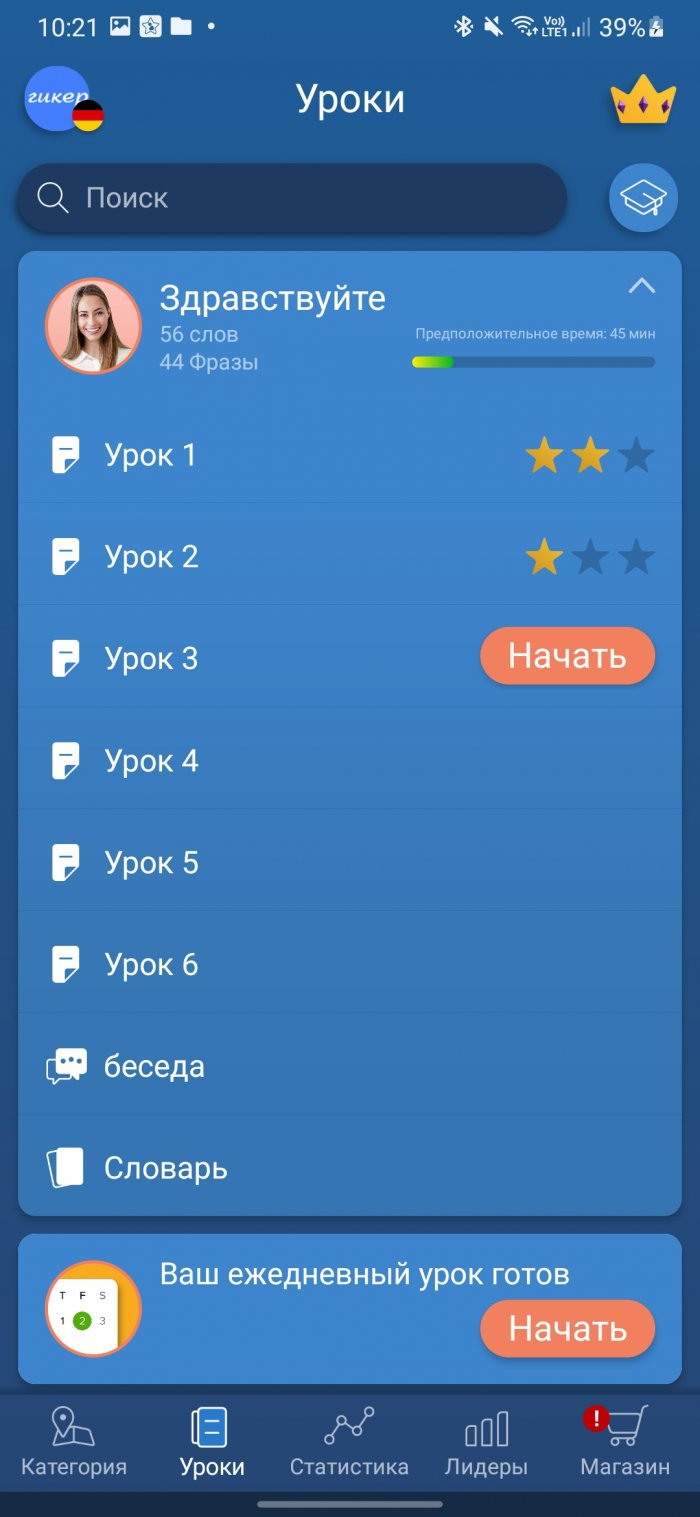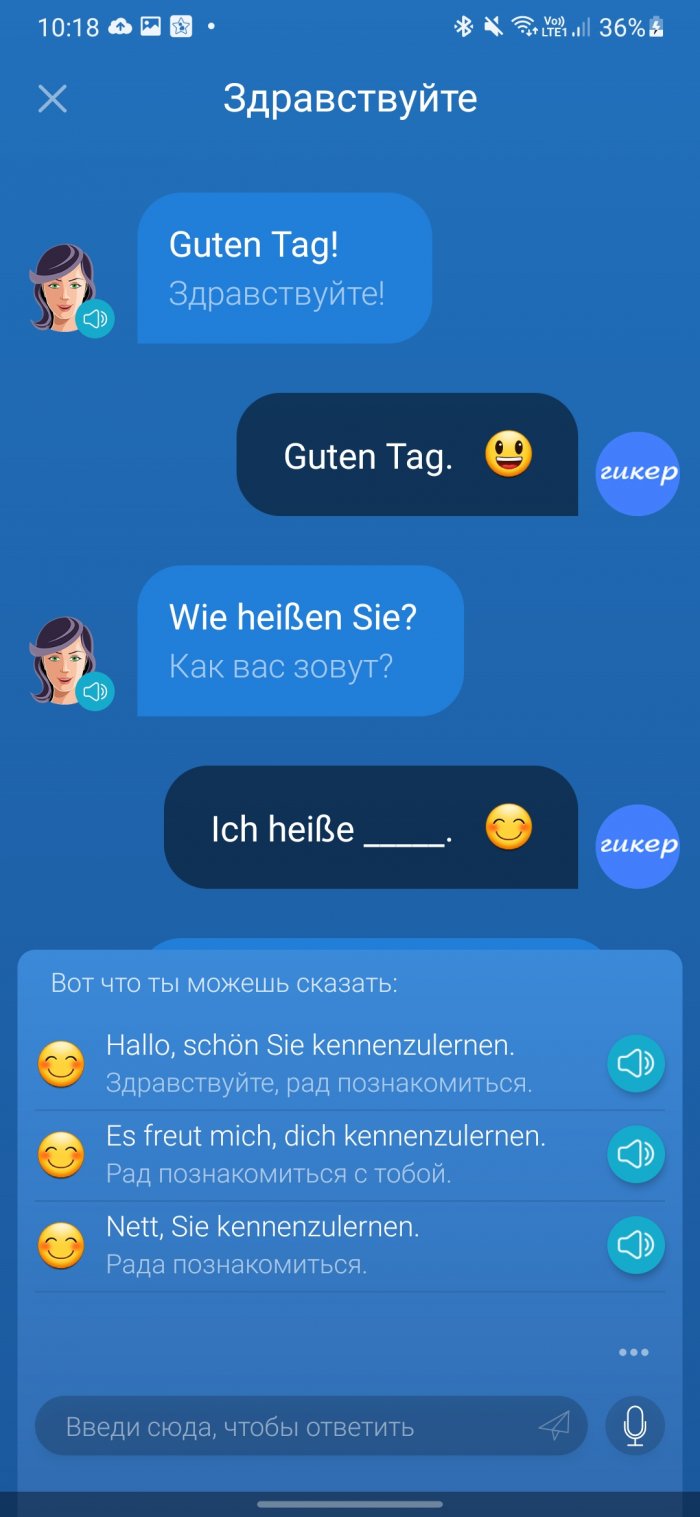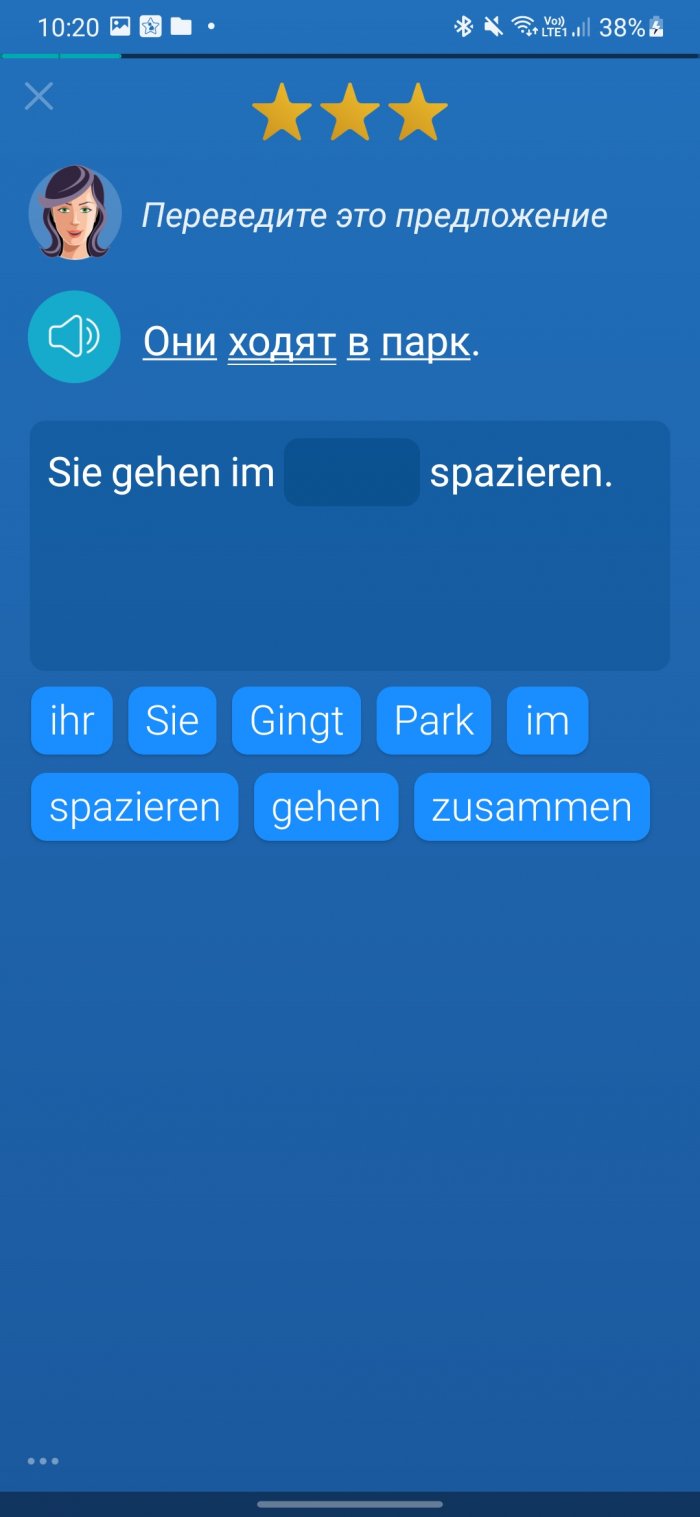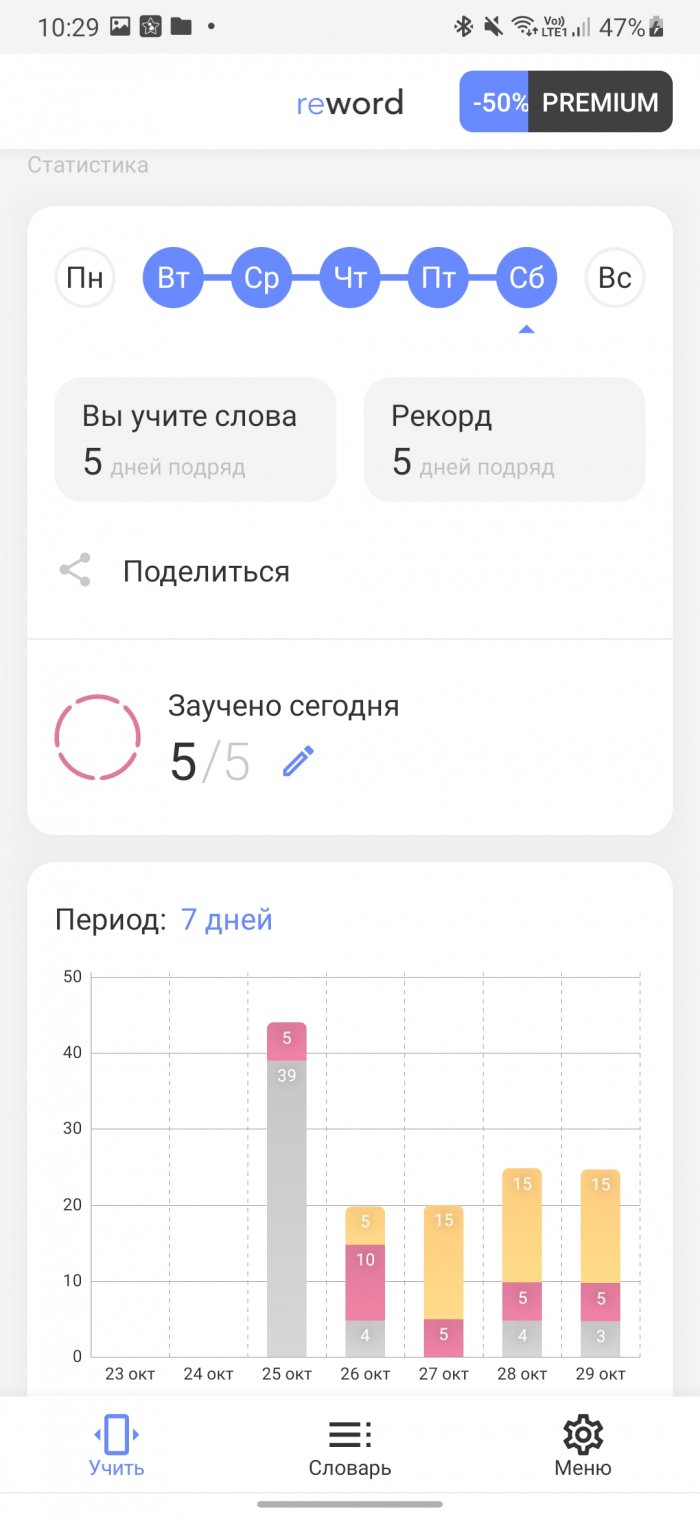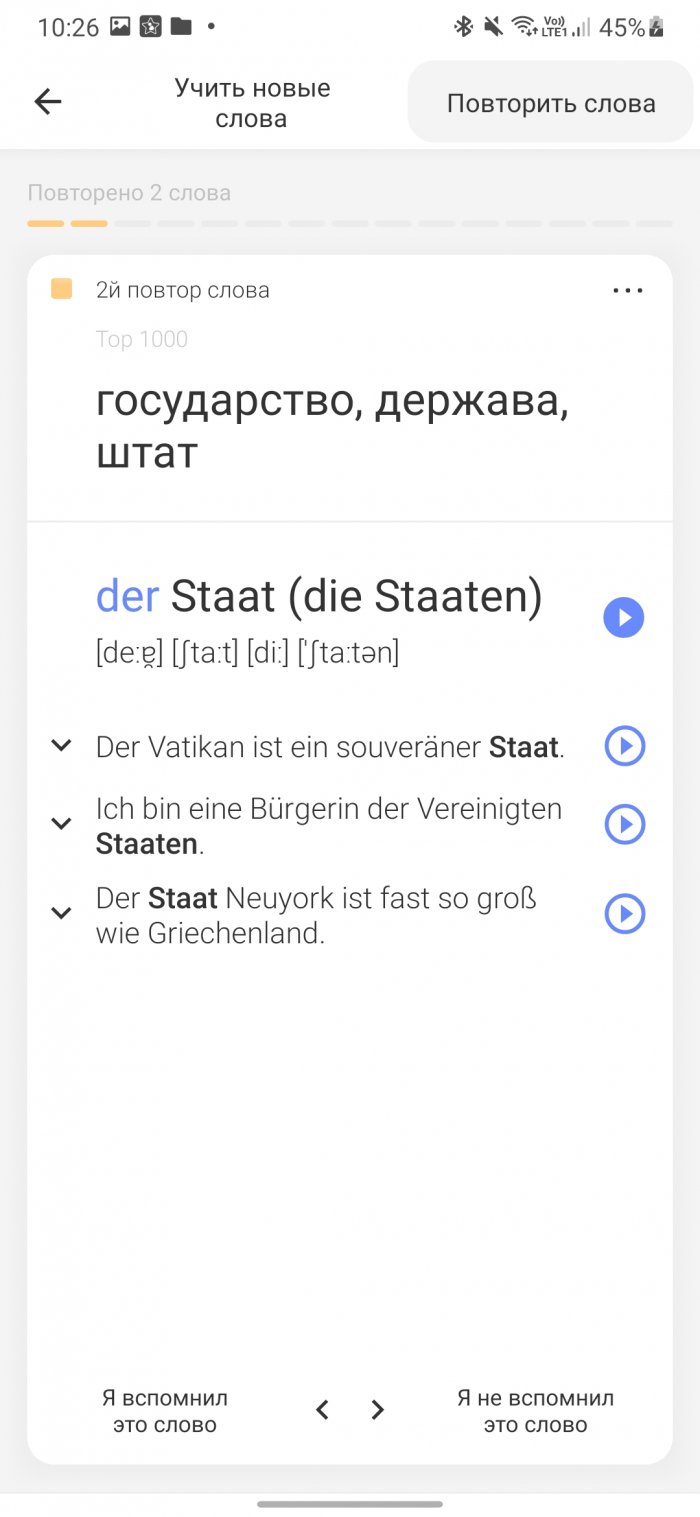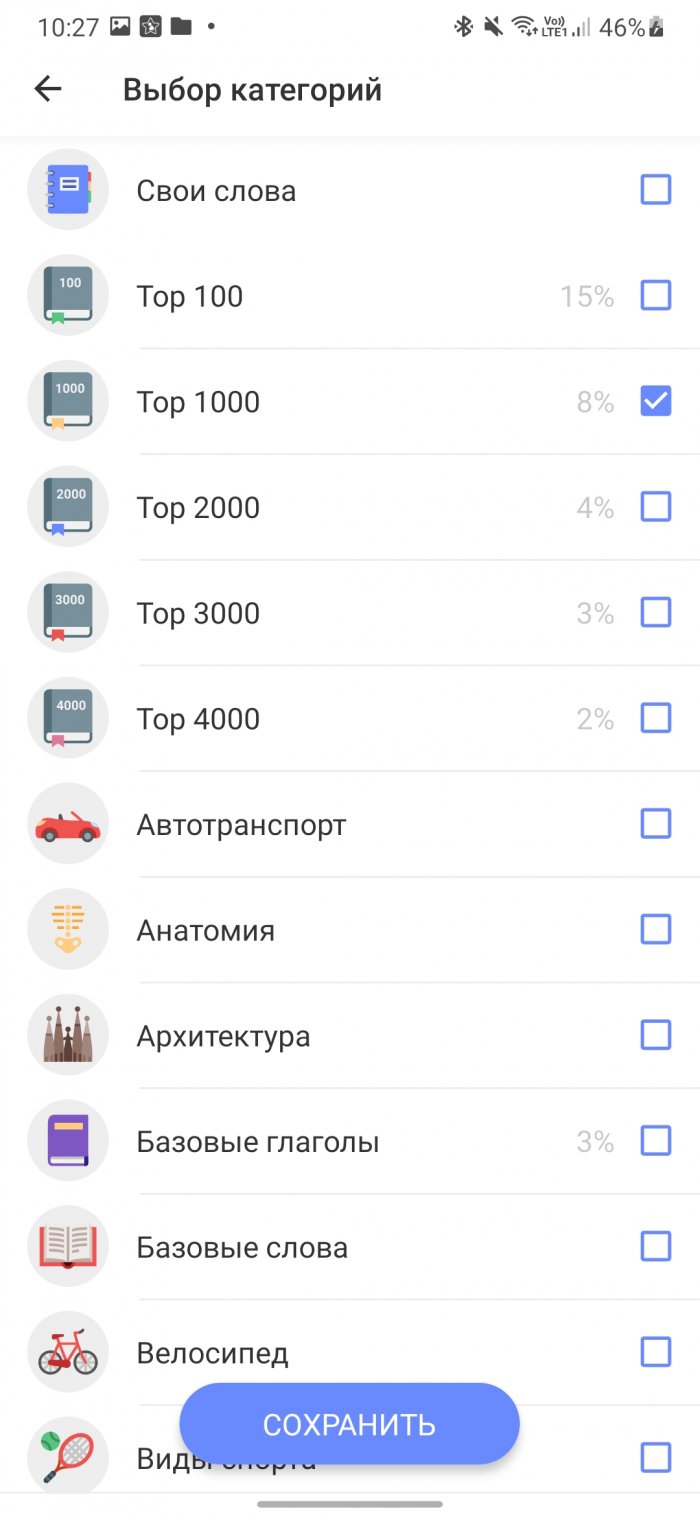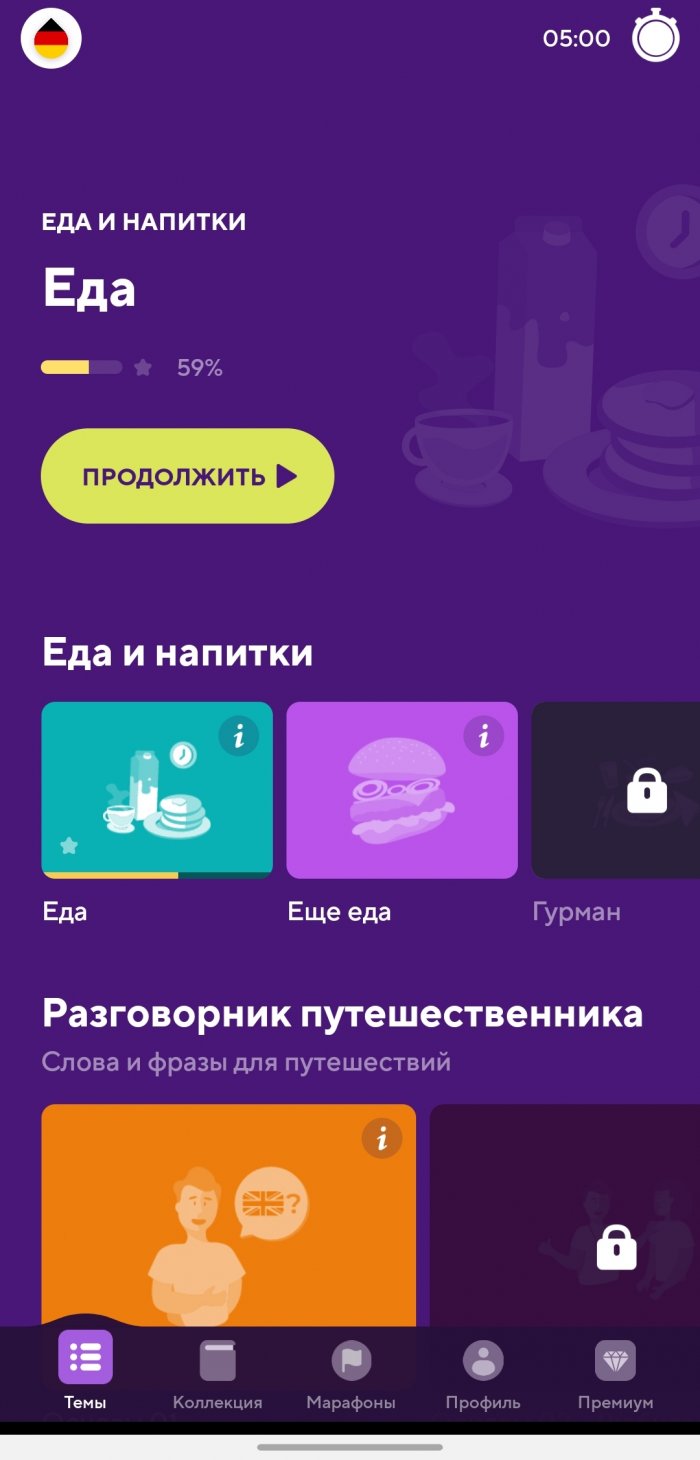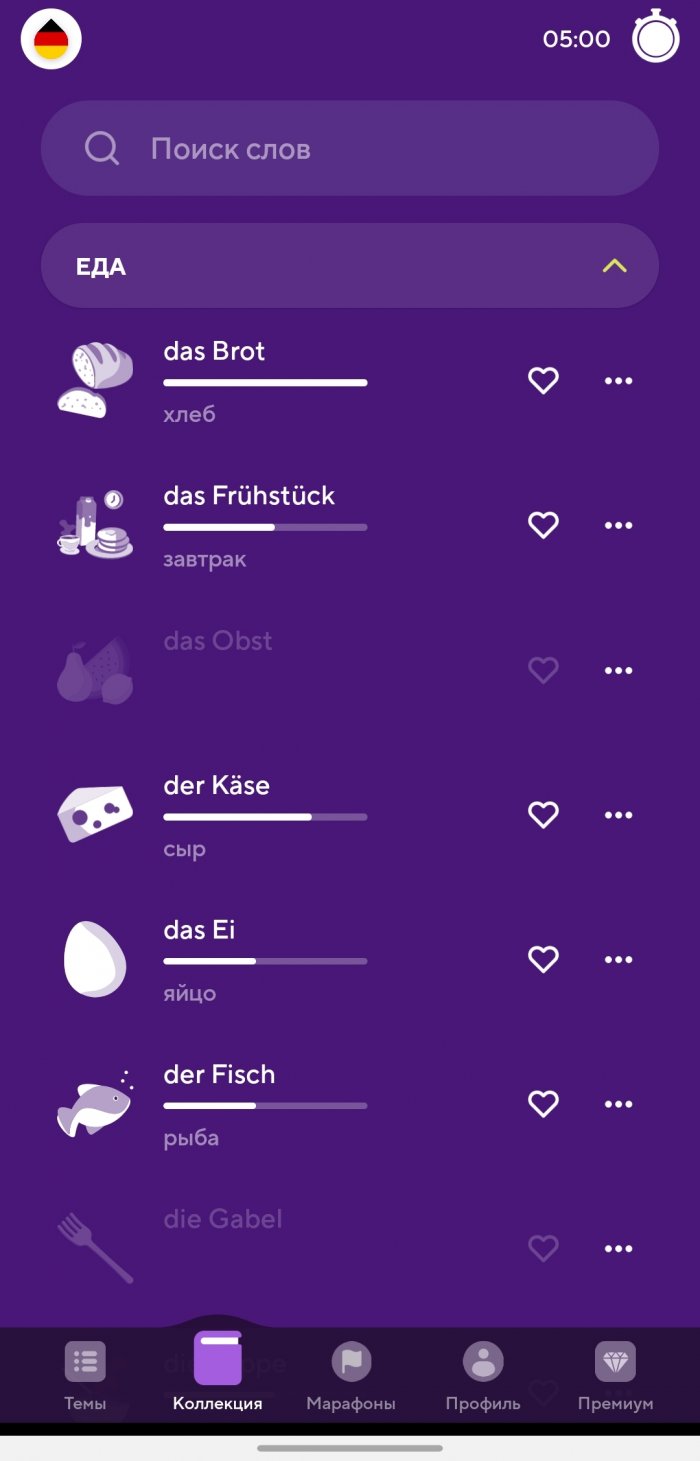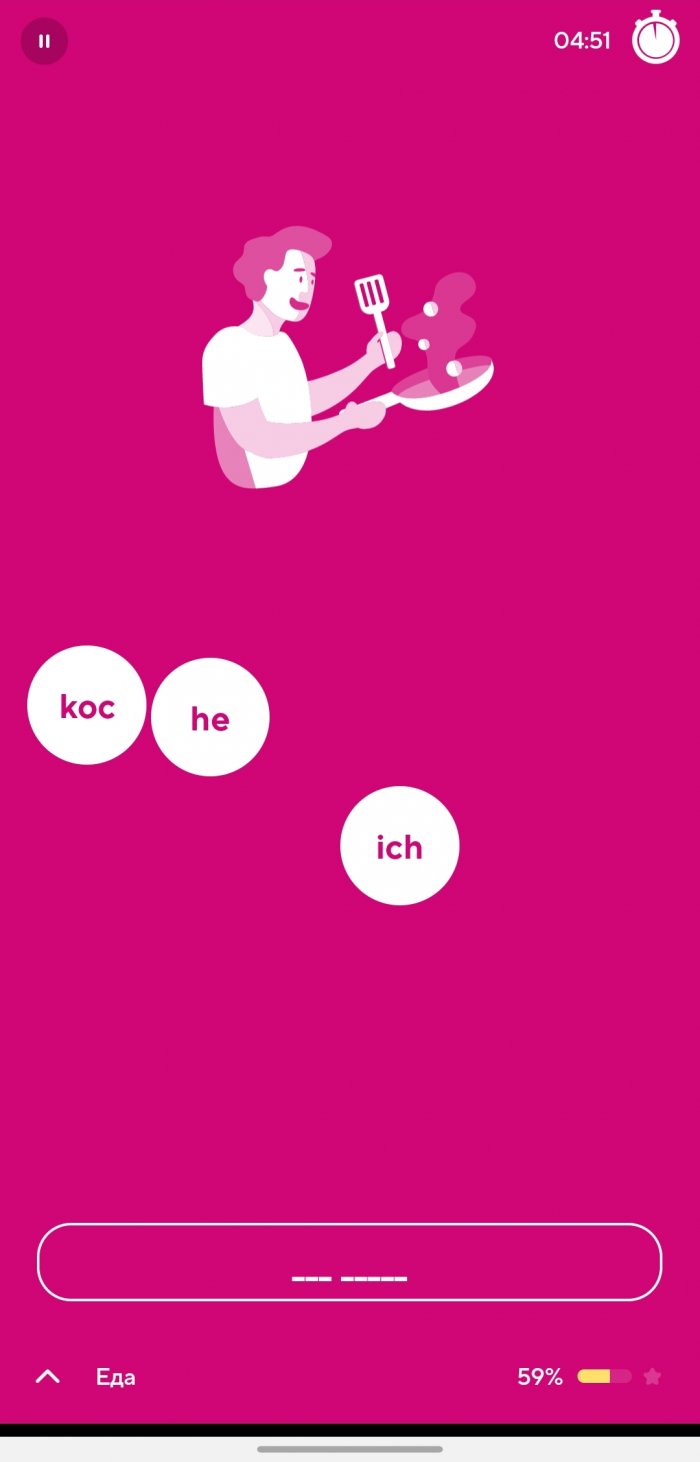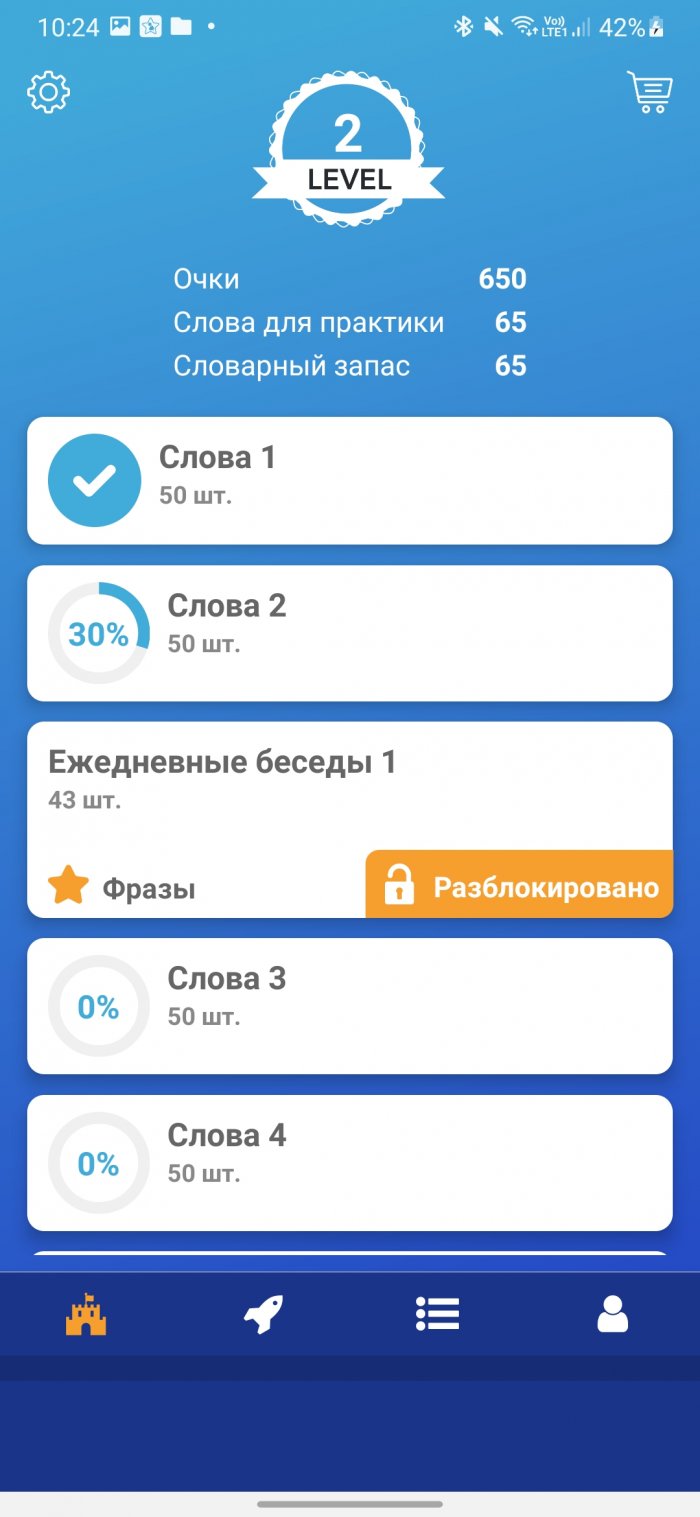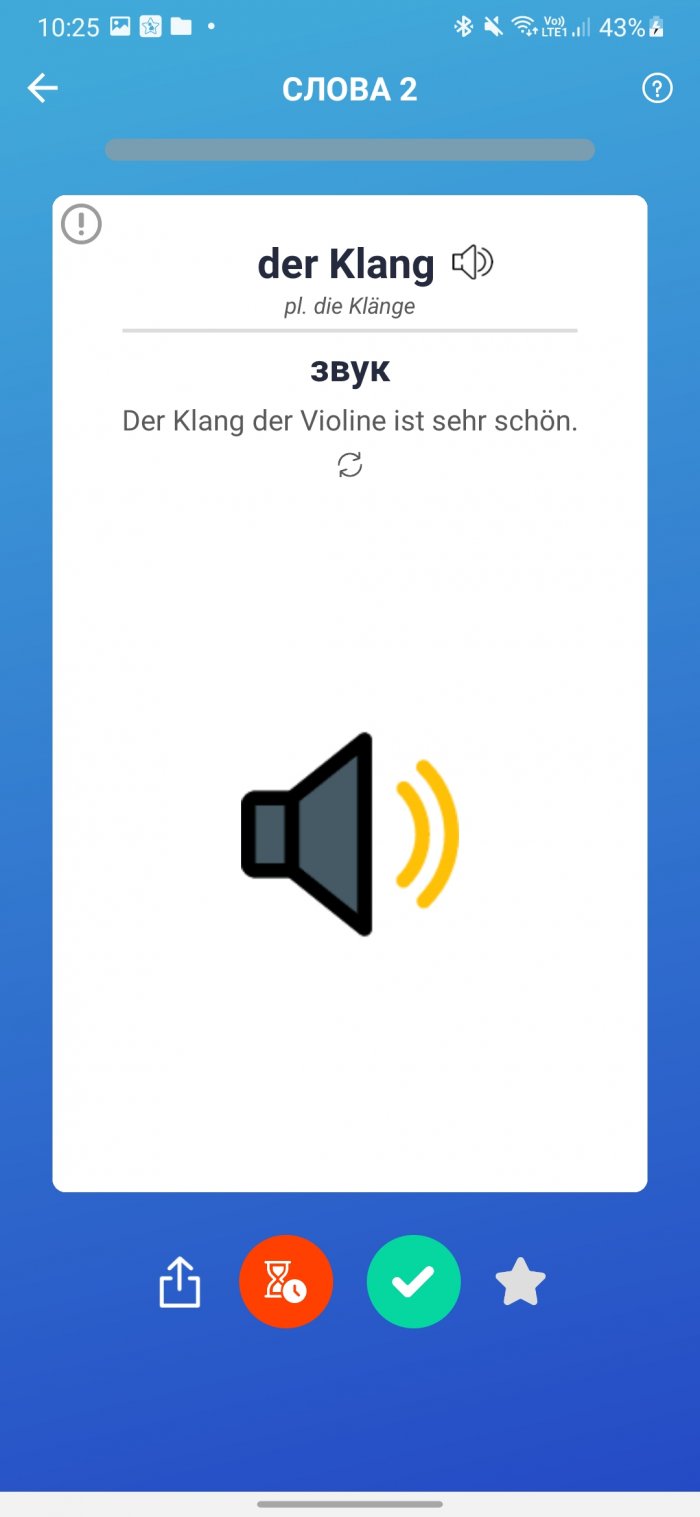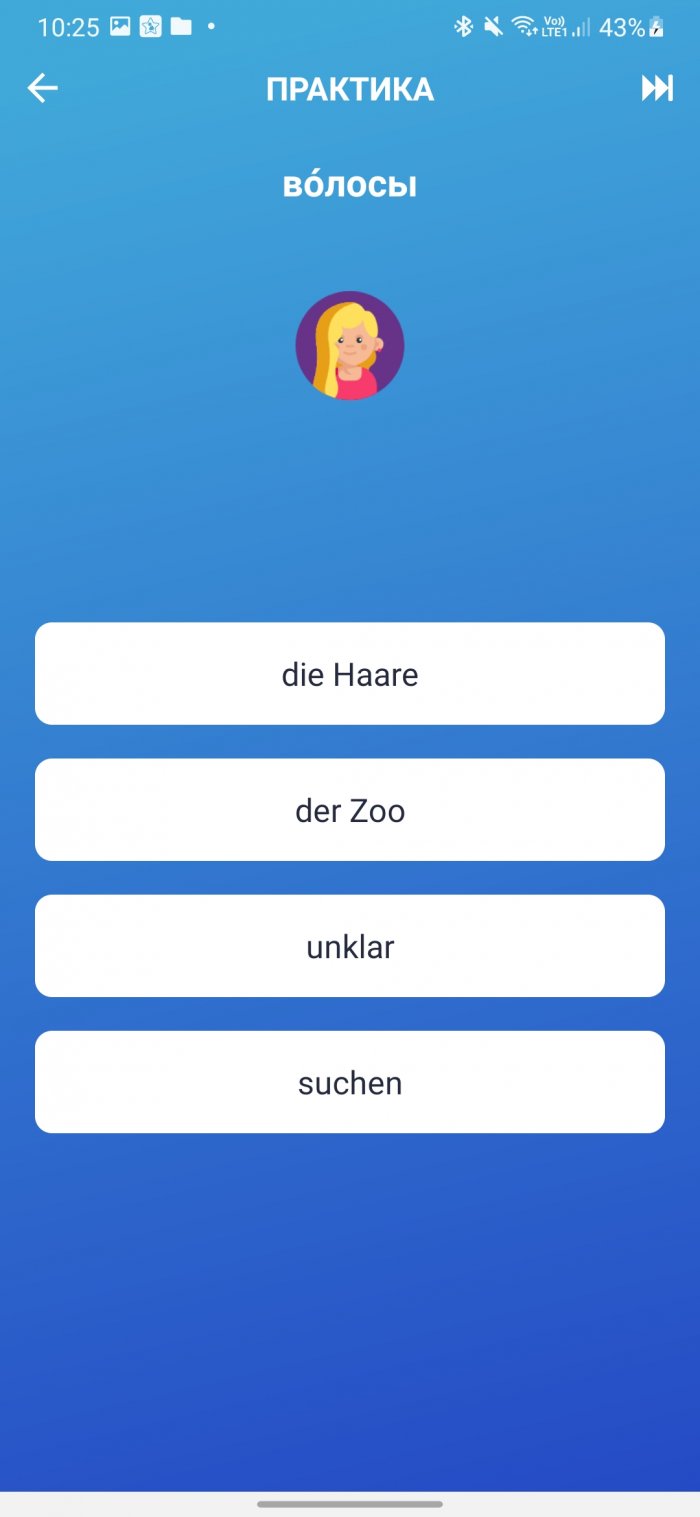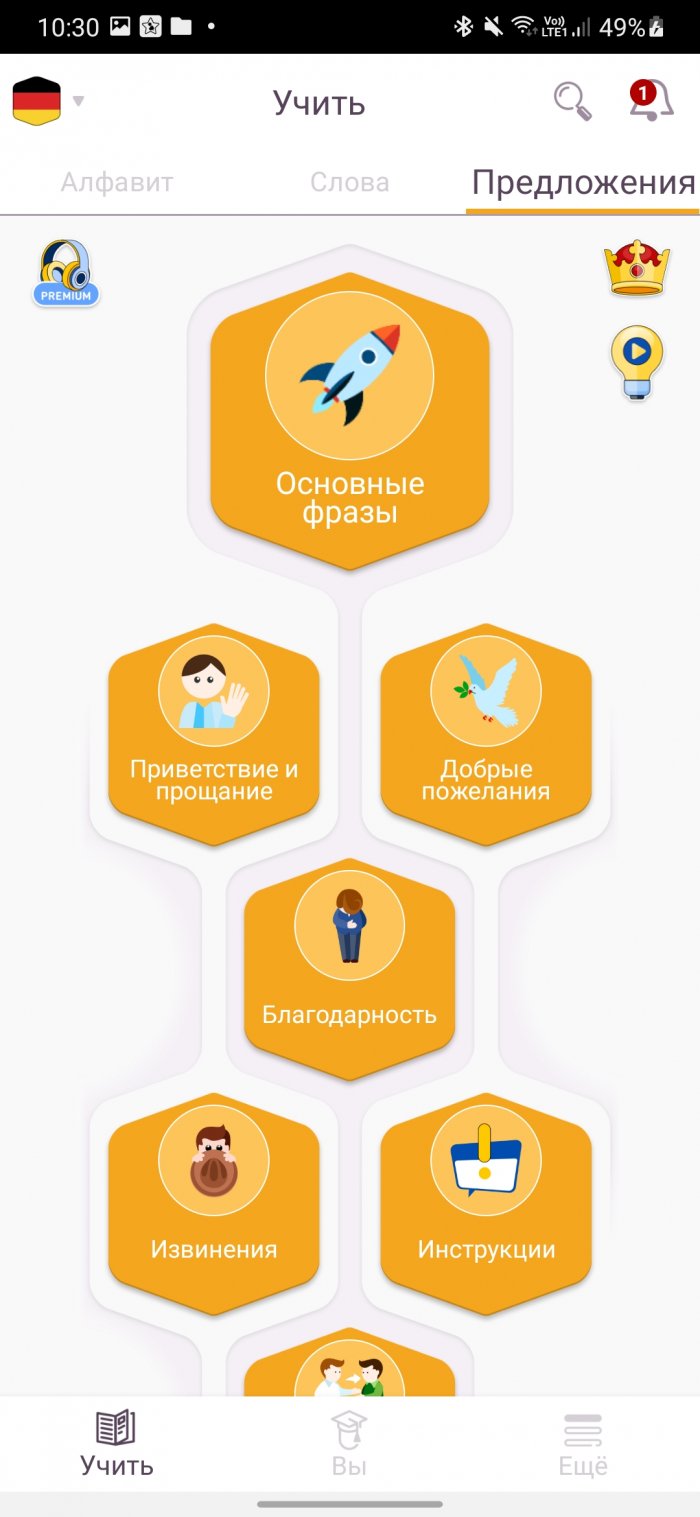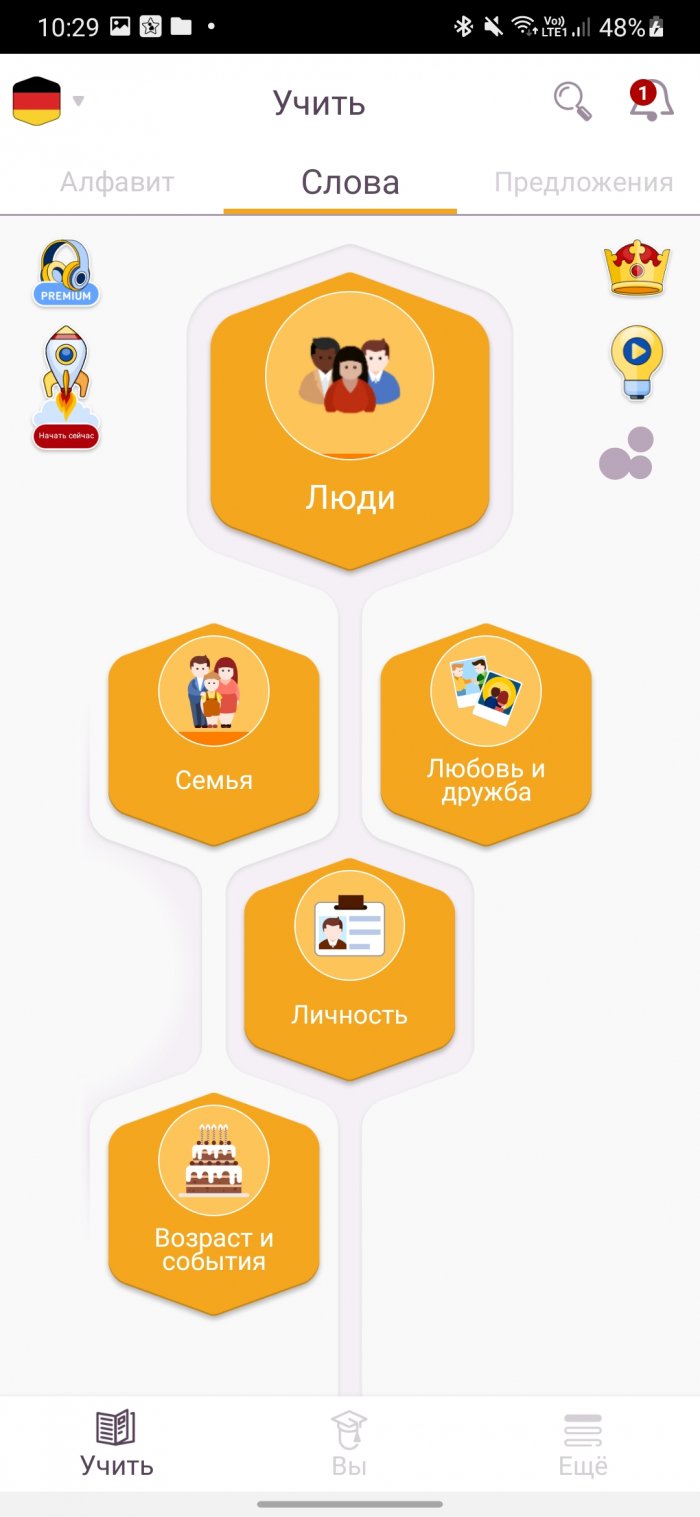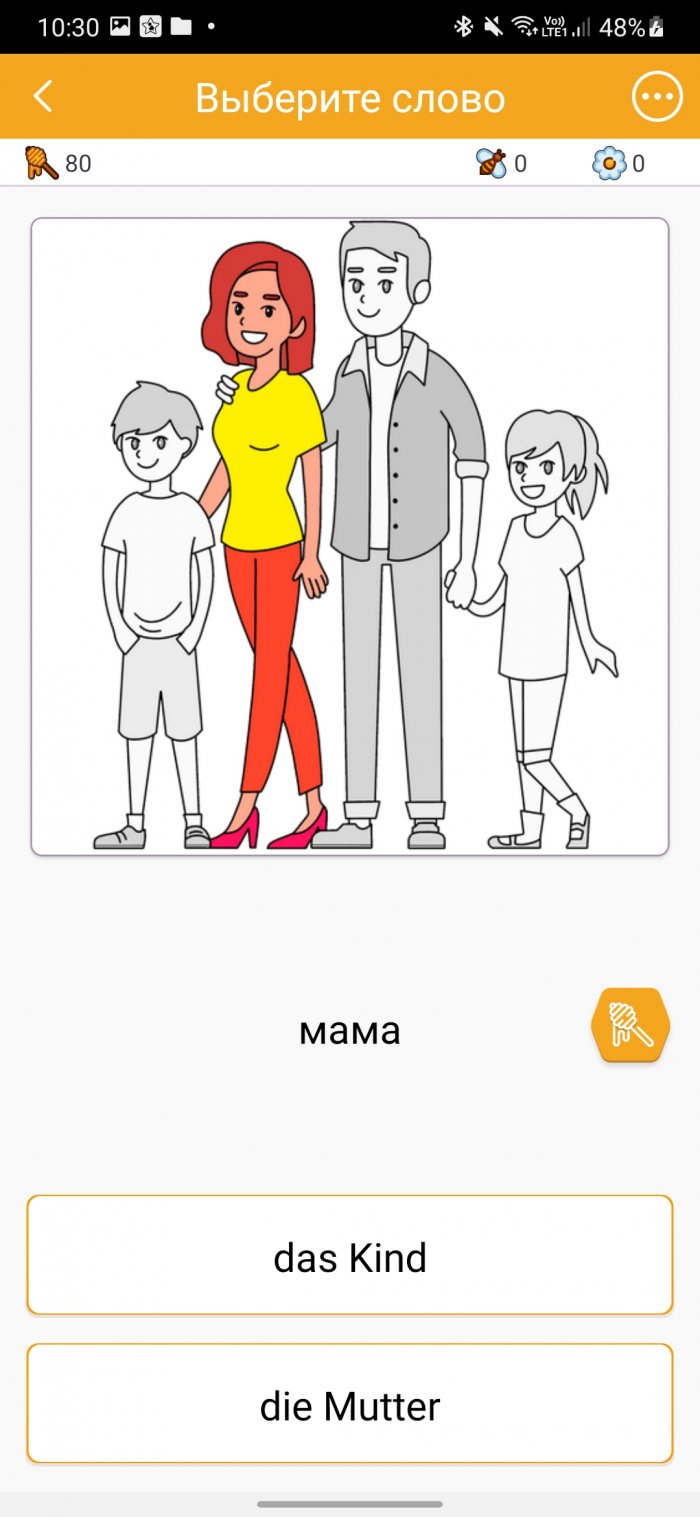How long does it take to learn German? The US Foreign Service Institute, which teaches foreign language courses for diplomats, rates German as a difficulty level 2 out of 5. This means that it will take about 30 weeks or 750 academic hours to reach level B2/C1 on European Framework of Reference for Language ProficiencyIn comparison, learning Japanese, which is a Category 5 language, takes 88 weeks or 2,200 hours.
Mondly
Words and texts in Mondly alternate in a special sequence, optimal for memorization. When you start learning, you will need to choose your level (beginner, intermediate, advanced), choose a topic of interest (travel, business, romance, school) and set a goal for the time of study (from 5 to 20 minutes a day).
There is a division into lessons that allow you to better consolidate the desired topic. You can always return to the lessons you have already studied and repeat them, which is very convenient at the first stages of learning a language. To consolidate the material, you will need to translate sentences and choose the correct translation option.
One of the best features is the voice bot. With its help, you can both improve your pronunciation and improve your listening comprehension of popular phrases in German. Although it is a bot, the phrases are voiced not by a robotic voice, but by a native speaker. The bot will ask questions and offer answer options, your task is to press the microphone button and pronounce the desired phrase.
The disadvantages of the application: there are no articles, no test for constructing sentences (they are already prepared, you cannot “construct” them yourself), which is why learning grammar suffers.
ReWord
With the app ReWord It is quite pleasant to learn new words, as there is a division of words by topics (you can choose any for studying or reinforcing). It is possible to listen to pronunciation, look at the IPA (International Phonetic Alphabet) for pronunciation, associate with an image, and also look at examples of use in colloquial speech or literature. It is especially worth noting the presence of thematic terms. If necessary, you can add your own list of words.
To fully learn a word, you need to repeat it about 6 times. The intervals between repetitions increase from 30 minutes to 2 months (the same principle is used in the Anki program). You will receive a notification when it is time to repeat. The better you remember the word, the less often it will appear. It is very convenient that there is a self-check that allows you to tell the application whether the word was remembered or not.
Cons: verbs do not have all forms. Not all functionality is available in the free version, but a lifetime license costs only 399 rubles.
Drops
Drops — is a German language learning app that stands out for its approach. It turns the learning process into an exciting game. Within one lesson, you have to complete various interactive tasks, such as matching, writing and listening. In the free version, the lesson duration is limited to five minutes.
The words are presented with interesting illustrations, which helps to connect the meaning of the word with a memorable image. In addition, each word is pronounced aloud. This approach promotes deeper memorization of vocabulary. You can highlight difficult words to put additional emphasis on them in future lessons. For a better understanding of pronunciation, a slow-motion option is provided.
Tobo
Application Tabo has several difficulty levels that you can choose when learning words. The application database contains 3,500 popular words with articles for nouns. The training is based on cards, but there are also various additional games for memorization.
Pronunciation help and a contextual approach to learning are also implemented. Each new word is accompanied by an example, which allows you to understand how it is used in real situations. Complex words can be put off "for later". This allows you to focus on words that require additional practice.
FunEasyLearn
The principle of learning new words in FunEasyLearn is quite simple (associative, auditory and visual memory is used), i.e. a picture, audio and pronunciation in two languages (Russian and German). The words are voiced by native speakers. There is a "Russian-German" mode, transcription and stress are shown. What is especially convenient is that memorizing articles is taken out into separate tasks. It is well suited for beginners, but for advanced ones it will be boring.
The words are divided into many categories and subcategories (more than 100 topics in total), there are a large number of lessons on each topic, grammar rules are available. You can hide learned words so that they do not appear when repeating new ones. But, alas, almost all words are only in the singular.
